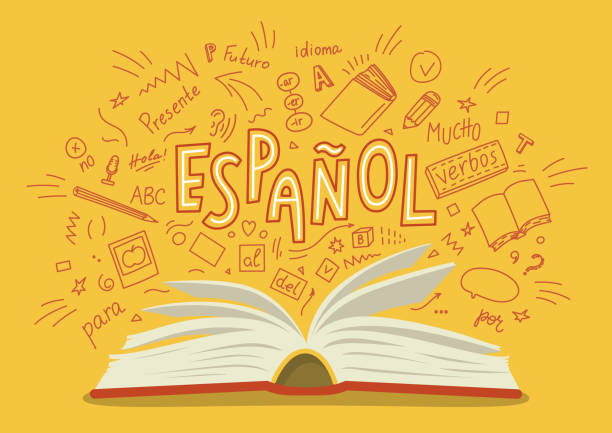D. Pronunciation of Vowels
Pronouncing words in Spanish is simpler than it is in English because when you look at a letter in Spanish, with
very rare exceptions you know exactly how to pronounce the sound of that letter. One challenging aspect of Spanish
pronunciation is that there are sounds in the language that don’t exist in English, and these can be difficult to pronounce
at first.
Each of the five vowels—a, e, i, o, u—makes just one sound in Spanish, a short sound that stays the same from
beginning to end.
• A, found in the common Spanish word casa, is the easiest vowel sound to make. For the other four vowel
sounds, focus on keeping the vowel sound short and uniform.
• E makes the sound pronounced in the English word “take.” It’s not “eyyyy.” You don’t close it off at the end as
you often do in English.
• I makes the sound pronounced in the word “fee.” It’s not “iyyyy.”
• O makes the sound pronounced in “toll.” It’s not “owwww.”
• U makes the sound pronounced in “rule.” It’s not “uwwww.”
The video lessons, audio glossaries, and speaking activities model proper pronunciation in Spanish.
E. Greetings
Among the very common greetings in Spanish are hola [hello]; ¿Qué tal? [How’s it going?]; and ¿Cómo estás? and
¿Cómo está usted? [How are you?]. ¿Cómo estás? is the informal way to say “How are you?” to someone. ¿Cómo
está usted? also asks “How are you?” but is used with someone you address formally.
Three ways to introduce yourself are Me llamo Bill [I call myself Bill, or My name is Bill]; Soy Bill [I am Bill]; and Mi
nombre es Bill [My name is Bill].
Common expressions used when you meet someone for the first time are mucho gusto [nice to meet you]; encantado
[pleased to meet you, masculine form]; encantada [pleased to meet you, feminine form]; Es un placer [It’s a pleasure];
and igualmente [likewise].
Greetings dependent on the time of day include buenos días or buen día [good morning]; buenas tardes [good
afternoon]; and buenas noches [good evening, or good night]. Ways to say “goodbye” include adiós [goodbye]; chao
[bye]; hasta luego [see you later]; hasta mañana [see you tomorrow]; hasta pronto [see you soon]; and nos vemos
[see you].
F. How Best to Approach This Course
If your goal is to work toward proficiency in Spanish, you should watch the video lessons and engage with the other
course materials as well. In order to make significant progress with your language skills, you’ll need to practice what’s
presented in the video lessons.
When you finish a lesson, you should next listen to the audio glossary, which will give you the pronunciation and definition
of all new vocabulary words. Then, it will be time to practice what you’ve learned. The speaking activities for each lesson
are designed to help you improve your listening and speaking skills. And the workbook exercises will allow you to practice
your reading and writing. You can decide if you want to do the speaking activities before or after you do the workbook
exercises, but you should do both of these only after watching the video lesson and listening to the audio glossary.
If you are able to involve someone else with your studies, you are encouraged to do so. Languages are meant for
social interaction, so take the course with a friend or seek out opportunities to speak Spanish with someone who
already knows the language. The more contact you have with Spanish, both within the course and beyond it, the better
your progress will be.
7
Lesson 1—Introduction to the Spanish Language
G. Global Importance of the Spanish Language
Although it might seem that Spanish has gained importance in the United States only recently, in 1787 Thomas
Jefferson wrote the following about the Spanish language in a letter to his nephew: “Bestow great attention on this,
and endeavor to acquire an accurate knowledge of it. Our future connections with Spain and Spanish America, will
render that language a valuable acquisition.” What was true in Jefferson’s time remains true today. Spanish is a
world language, and its importance now extends beyond its use in other countries to the mainland of the United
States.
Acquiring Spanish is a way of broadening your horizons and becoming more connected to the diverse traditions that
are being lived out across oceans and right next door. A sincere desire to learn accompanied by diligent practice
makes acquiring Spanish an achievable goal for people of all ages. And the benefits of being able to communicate in
Spanish are significant. After all, half a billion people are waiting to talk with you.
¡Buenos días! ¡Buenas tardes! ¡Buenas noches!
III. Actividades / Activities
Carlos González y Alejandra Fallas se acaban de mudar con su familia al vecindario Villa Celeste y están saludando
y conociendo a sus vecinos. / Carlos González and Alejandra Fallas have just moved with their family to the
neighborhood Villa Celeste and are greeting and getting to know their neighbors.
a. Completa las siguientes frases con la expresión apropiada. / Complete the following sentences with the appropriate
expression.
1. Esteban: Hola, ¿___________________ están?
2. Carlos: ¡____________________, gracias!
3. Esteban: ¿Cómo ________________?
4. Carlos: __________________ Carlos. ¿Y usted?
5. Esteban: __________________ Esteban, y ella es mi esposa [and she is my wife], Luisa.
6. Carlos: ¡_________________ gusto! Ella es mi esposa, Alejandra.
7. Alejandra: ¡____________________!
8. Luisa: ¡____________________!

